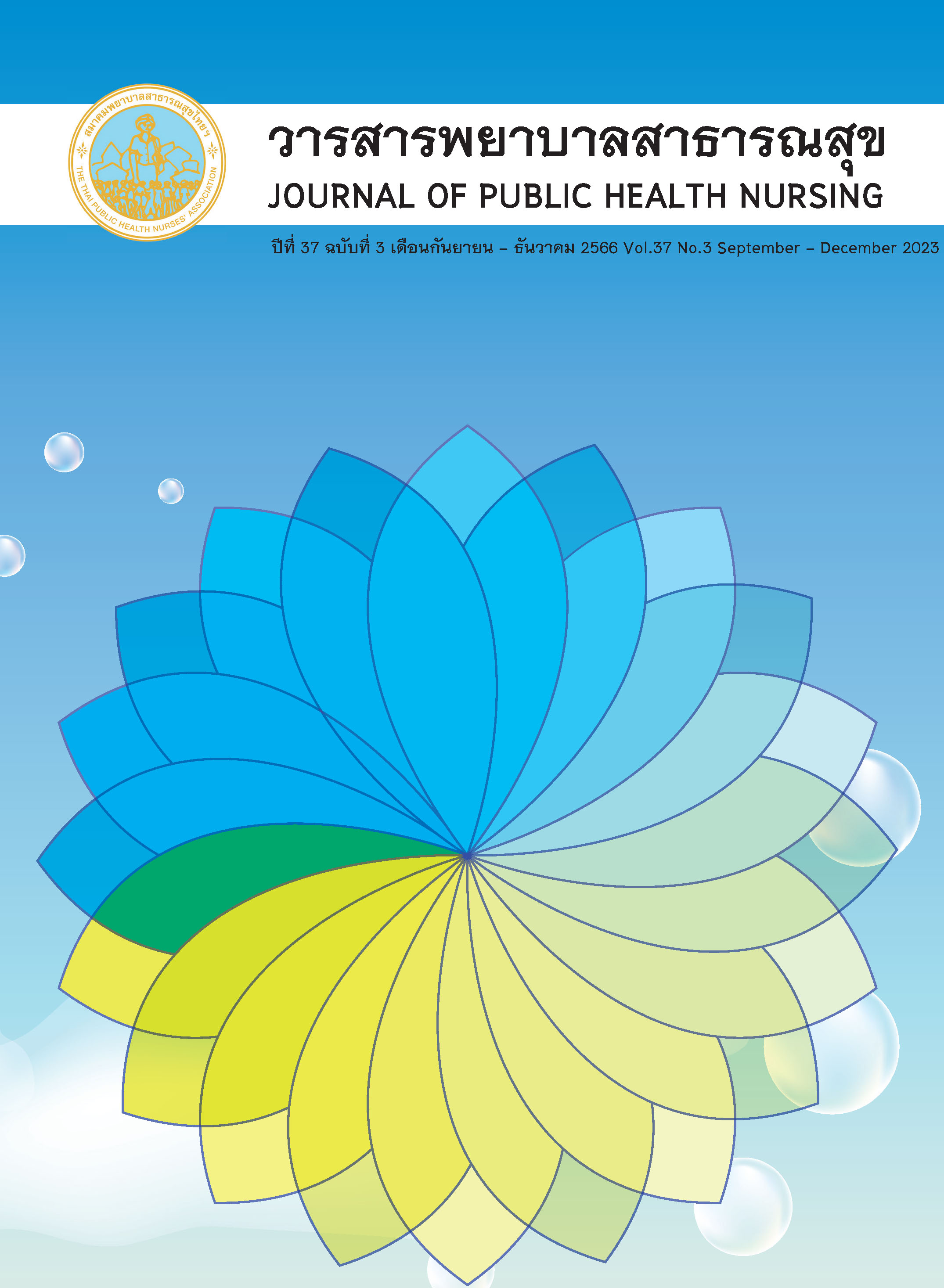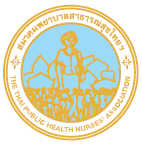The Application of the Nursing Care Process to the 3 Doctors for Every Thai Family Policy
The Application of the Nursing Care Process to the 3 Doctors for Every Thai Family Policy
Keywords:
Keywords: Nursing process/ The 3 Doctors for Every Thai Family Policy, Nursing process, The 3 Doctors for Every Thai Family PolicyAbstract
Abstract
The 3 Doctors for Every Thai Family or the 3-Doctor Policy is a policy to create access to the health service system. The 1st doctor is a house doctor who is a village health volunteer (VHV) with responsibility to visit houses, and perform primary screening. The 2nd doctor is a public health doctor who is personnel in a primary health facility or subdistrict health promotion hospital, including registered nurses, pharmacists, community public health technical officers, or other professions with responsibility to implement health promotion and coordinate with the 1st doctor and the 3rd doctor. The 3rd doctor is a family doctor who is a doctor in a hospital with responsibility to provide treatment, give advice, and coordinate and refer for specialist treatment. Accordingly, 1 community health nurse as the 2nd doctor plays an important role to drive the implementation. This article is aimed at presenting the concept in the application of the nursing care process to the 2nd doctor implementation according to the 3-doctor policy in 5 steps: community health assessment, community problem diagnosis, problem-solving, planning, and health problem assessment. Under this role, the community health nurse is responsible for giving knowledge and advice, coordinating and managing work, and performing risk assessments on community health. This is an alternative way for community health nurses to act in defining a framework to generate good outcomes from work coordination and to achieve the creation of a public access policy.
* Corresponding Author, Ph.D., Faculty of Nursing, Kamphaeng Phet Rajabhat University
** Associate Professor., Ph.D., Faculty of Public Health, Naresuan University
*** Assistant Professor Dr., Faculty of Nursing, Kamphaeng Phet Rajabhat University
**** lecturer., Faculty of Nursing, Kamphaeng Phet Rajabhat University
References
Department of Health Service Support. (2022). 3 doctors “every thai family has 3 personal doctors". August 1, 2023, https://prgroup.hss.moph.go.th/article/1175-3
Department of Health Service Support. (2020). The Ministry of Public Health gives a New Year's gift for 2021, every Thai person has 3 personal doctors, "care close to you, close to home, close to your heart". August 5, 2023,https://prgroup.hss.moph.go.th/news/177
Tithiphontumrong S. The Integration of Health Promotion Concepts in Teaching and Learning of Community Health Nursing and Heath Promoting Competencies of Nursing Students. Thai Red Cross Nursing Journal. 2016;9(2):49-72.
Thailand Nursing and Midwifery Council. Thailand Nursing and Midwifery Council on Professional nurse Competency 1999 [cited 2023 April 30]. Available from: http://www.tnc.or.th/files/2016/09/page-44708/__28294.pdf.
Khungtumneam K. Community Health Care Process: The Role of Community Nurse. Journal of Phrapokklao Nursing College 2(7):140-8.
Gordon M. Nursing diagnosis: Process and Application. New York: McGraw-Hill; 1994.
NANDA International.: Definitions and Classification. https://www.wiley.com/en-ie/Nursing+Diagnoses+2009+2011:
Yana T, Bookboon P. Know the principles, know how to adapt: Tools for working with communities. Bangkok: Beyond Publishing Co. LTD.; 2022.
Severtson DJ, Baumann LC, Will JA. A participatory assessment of environmental health concerns in an Ojibwa community. Public Health Nursing. 2002;19(1):47-58.
Nantabut K. Community health care system: concepts, tools, design. Nonthaburi: Institute. Research and development of nursing system, Nursing Council; 2008.
Instructor Yongyuth Bunjong Master of Nursing Science (Community Nurse Practitioner), Faculty of Nursing, Buriram Rajabhat University. History taking, physical examination, laboratory examination 2022 [cited 2022 August 15]. Available from: https://dspace.bru.ac.th/xmlui/bitstream/handle/123456789/7134/.
Powwattana A. Priority setting of problems. In: Thiangtham W, Powwattana A, editors. Community capacity building : concept and applications. Bangkok: Danex Intercorporation company Limited; 2015. p. 159-77.
Singdong N. (2013). Documents for teaching nursing processes in solving community health problems. Ubon Ratchathani: Boromarajonani College of Nursing Sanpasithisrasong.
Nursing Division of Ministry of Public Health Thailand. (2018). Roles and duties of professional nurses. Bangkok: SueTawan Printing House.
Marcus TS, Janse van Rensburg MN. Evaluating community health worker education policy through a National Certificate (Vocational) Primary Health qualification lens. African Journal of Primary Health Care and Family Medicine. 2020;12(1):1-11.
Sathagathonthun G. The Evaluation of Nursing Organizations Effectiveness. Journal of Nursing and Health Sciences 2018; 12(3): 10-20.
Blair W. Barbara Smith. Nursing documentation: Frameworks and barriers. Contemporary Nurse.41(2):160-8.
Brunetto Y, Shriberg A, Farr‐Wharton R, Shacklock K, Newman S, Dienger J. The importance of supervisor–nurse relationships, teamwork, wellbeing, affective commitment and retention of North American nurses. Journal of Nursing Management. 2013;21(6):827-37.
Downloads
Published
How to Cite
Issue
Section
License
Copyright (c) 2023 Thai Public Health Nurses Association

This work is licensed under a Creative Commons Attribution-NonCommercial-NoDerivatives 4.0 International License.
บทความที่ตีพิมพ์และแผนภูมิรูปภาพถือเป็นลิขสิทธิ์ของวารสารพยาบาลสาธารณสุข (Thai Public Health Nurses Association)







